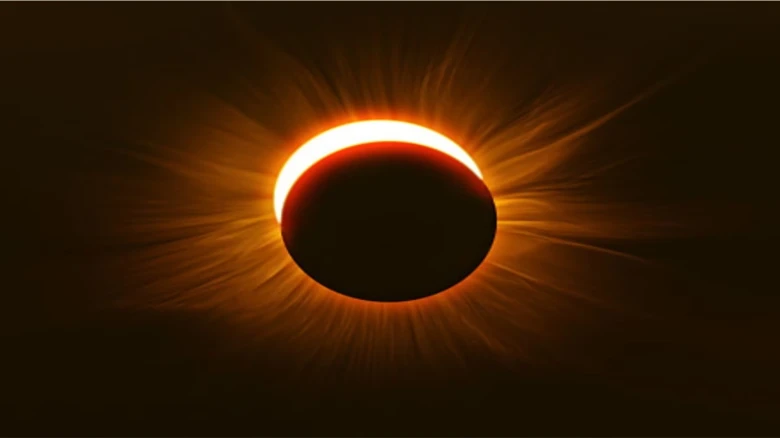National

A hybrid solar eclipse is a unique type of eclipse that occurs just once every century. According to NASA, hybrid eclipses go from annular to total due to the curvature of our planet.
Digital Desk: The world will witness a unique astronomical event: a hybrid
solar eclipse. It occurs when a total eclipse and an annular solar eclipse both
occur at the same time.
When the moon
passes between the Earth and the Sun, it casts a shadow on the Earth's surface.
Here's everything you need to know about
today's hybrid solar eclipse.
mso-fareast-theme-font:minor-latin">What exactly is a hybrid solar eclipse?
mso-fareast-theme-font:minor-latin">A hybrid solar eclipse is a unique type of
eclipse that occurs just once every century. According to NASA, hybrid eclipses
go from annular to total due to the curvature of our planet.
mso-fareast-theme-font:minor-latin">What distinguishes it from a total eclipse?
Calibri;mso-fareast-theme-font:minor-latin">Total eclipses happen when the moon
totally obscures the sun, annular eclipses happen when the moon obscures the
sun but appears smaller, leaving the shape of a solar ring, and hybrid eclipses
happen when both happen at the same time.
mso-fareast-theme-font:major-fareast;color:#212121;mso-bidi-font-weight:bold">Where
will it be seen?
mso-fareast-theme-font:major-fareast;color:#212121;mso-bidi-font-weight:bold">On
April 20, skywatchers in Australia and parts of Southeast Asia will be able to
see a hybrid solar eclipse as it travels over the Indian and Pacific Oceans,
according to NASA. Unfortunately, India will not be able to see the hybrid
solar eclipse.
mso-fareast-theme-font:major-fareast;color:#212121;mso-bidi-font-weight:bold">Is
it time to view the solar eclipse?
"Times New Roman";mso-fareast-theme-font:major-fareast;color:#212121;
mso-bidi-font-weight:bold">The eclipse will be visible in Western Australia
from 10:29 p.m. to 10:35 p.m. EDT on April 19 (2:29 p.m. to 2:35 p.m. GMT on
April 20), East Timor from 11:19 p.m. to 11:22 p.m. EDT on April 19 (3:19 p.m.
GMT on April 20), and Indonesia from 11:23 p.m. to 11:58 p.m.
When will the next
solar eclipse be visible?
Leave A Comment